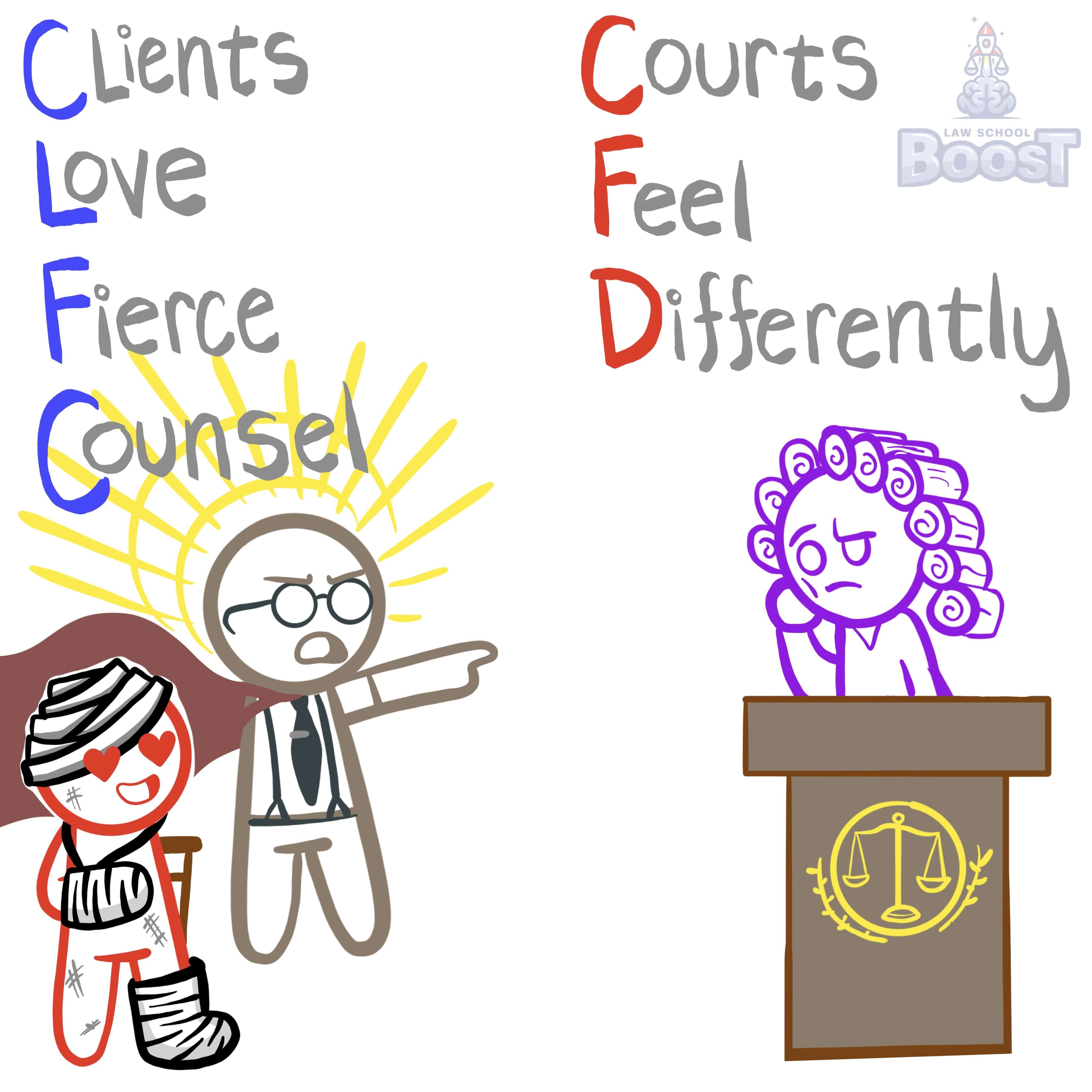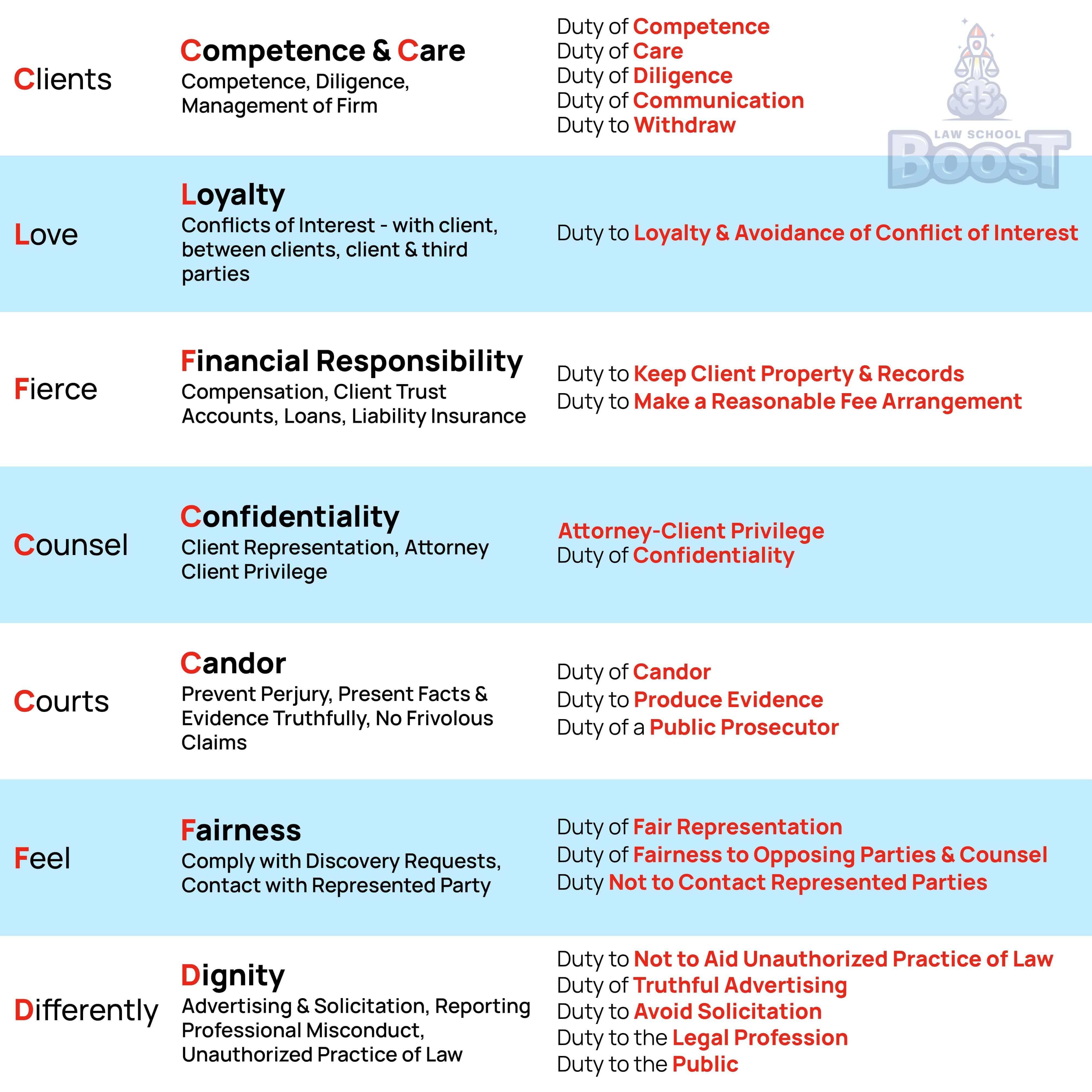‼️
Prof Responsibility • Formation & Scope
PR#003
Legal Definition
Generally, clients control goals and substantive decisions (like whether to settle or plead), and lawyers control the means to achieve goals. Note that lawyers may reasonably limit client goals with consent of the client.
Plain English Explanation
When it comes to who's in charge of what in a legal case, think of it like planning a road trip. The client is the one who decides on the destination - they set the big goals and make the major decisions. For example, they get to choose whether to accept a settlement offer in a civil case or what plea to enter in a criminal case. It's like deciding whether you want to go to the beach or the mountains.
On the other hand, the lawyer is like the navigator and driver. They're in charge of figuring out how to get to the destination - the technical and tactical aspects of the case. This might include things like which legal arguments to make or what evidence to present. It's similar to choosing which roads to take or when to stop for gas on your road trip.
However, just like you might agree to take a detour on your trip, a lawyer can limit the scope of what they'll do for a client, but only if the client agrees. This is called "limiting the scope of representation." For instance, a lawyer might agree to help with negotiation but not with going to trial. This arrangement needs to be reasonable, and the client must give informed consent - meaning they understand and agree to the limitations.
Remember, while the lawyer is steering the legal vehicle, they can't just ignore the client's wishes and drive off in a completely different direction. The lawyer's job is to use their expertise to help the client reach their chosen destination as effectively as possible, while staying within the bounds of what's legal and ethical. This balance ensures that clients maintain control over the big decisions in their case while benefiting from their lawyer's professional judgment and skills.
On the other hand, the lawyer is like the navigator and driver. They're in charge of figuring out how to get to the destination - the technical and tactical aspects of the case. This might include things like which legal arguments to make or what evidence to present. It's similar to choosing which roads to take or when to stop for gas on your road trip.
However, just like you might agree to take a detour on your trip, a lawyer can limit the scope of what they'll do for a client, but only if the client agrees. This is called "limiting the scope of representation." For instance, a lawyer might agree to help with negotiation but not with going to trial. This arrangement needs to be reasonable, and the client must give informed consent - meaning they understand and agree to the limitations.
Remember, while the lawyer is steering the legal vehicle, they can't just ignore the client's wishes and drive off in a completely different direction. The lawyer's job is to use their expertise to help the client reach their chosen destination as effectively as possible, while staying within the bounds of what's legal and ethical. This balance ensures that clients maintain control over the big decisions in their case while benefiting from their lawyer's professional judgment and skills.
Hypothetical
Hypo 1: Sam is facing a criminal charge and hires Bob as his defense attorney. During the trial, Bob believes that putting Sam on the stand to testify would be a risky move that could backfire. However, Sam insists on testifying, believing it's his best chance to explain his side of the story. Bob strongly advises against it but ultimately prepares Sam for testimony. Result: In this case, the decision of whether the defendant will testify is ultimately up to Sam, the client. While Bob can and should provide his professional opinion and advice, the final decision rests with Sam. Bob must respect Sam's choice and do his best to prepare Sam for testimony, even if he disagrees with the decision.
Hypo 2: Sam is suing his former employer for wrongful termination. His lawyer, Bob, receives a settlement offer from the employer. Bob believes it's a fair offer and recommends accepting it, but Sam wants to reject it and go to trial, hoping for a larger award. Result: The decision to accept or reject a settlement offer belongs to Sam, the client. Even if Bob thinks it's unwise, he must communicate the offer to Sam and respect Sam's decision to reject it. Bob's role is to advise Sam on the pros and cons of the decision, but not to make the decision for him.
Hypo 3: Sam hires Bob to represent him in a complex patent infringement case. Bob decides to file a motion to dismiss based on a technicality in the patent law. Sam disagrees with this strategy, preferring to focus on proving non-infringement instead. Result: In this scenario, Bob has the authority to make this strategic decision. The choice of which motions to file and legal arguments to make falls under the lawyer's control of the means to achieve the client's goals. However, Bob should explain his reasoning to Sam and consider Sam's input, even if he ultimately decides to proceed with the motion to dismiss.
Hypo 4: Sam asks Bob to represent him in both a divorce case and a business dispute. Bob agrees but proposes to limit his representation in the business dispute to negotiation only, not including any potential litigation. Sam agrees to this arrangement in writing after Bob explains the limitations. Result: This is a permissible limitation on the scope of representation. Bob has clearly communicated the limitation, and Sam has given informed consent. As long as this limitation is reasonable under the circumstances, it's allowed under the rules of professional conduct.
Hypo 2: Sam is suing his former employer for wrongful termination. His lawyer, Bob, receives a settlement offer from the employer. Bob believes it's a fair offer and recommends accepting it, but Sam wants to reject it and go to trial, hoping for a larger award. Result: The decision to accept or reject a settlement offer belongs to Sam, the client. Even if Bob thinks it's unwise, he must communicate the offer to Sam and respect Sam's decision to reject it. Bob's role is to advise Sam on the pros and cons of the decision, but not to make the decision for him.
Hypo 3: Sam hires Bob to represent him in a complex patent infringement case. Bob decides to file a motion to dismiss based on a technicality in the patent law. Sam disagrees with this strategy, preferring to focus on proving non-infringement instead. Result: In this scenario, Bob has the authority to make this strategic decision. The choice of which motions to file and legal arguments to make falls under the lawyer's control of the means to achieve the client's goals. However, Bob should explain his reasoning to Sam and consider Sam's input, even if he ultimately decides to proceed with the motion to dismiss.
Hypo 4: Sam asks Bob to represent him in both a divorce case and a business dispute. Bob agrees but proposes to limit his representation in the business dispute to negotiation only, not including any potential litigation. Sam agrees to this arrangement in writing after Bob explains the limitations. Result: This is a permissible limitation on the scope of representation. Bob has clearly communicated the limitation, and Sam has given informed consent. As long as this limitation is reasonable under the circumstances, it's allowed under the rules of professional conduct.
Visual Aids





